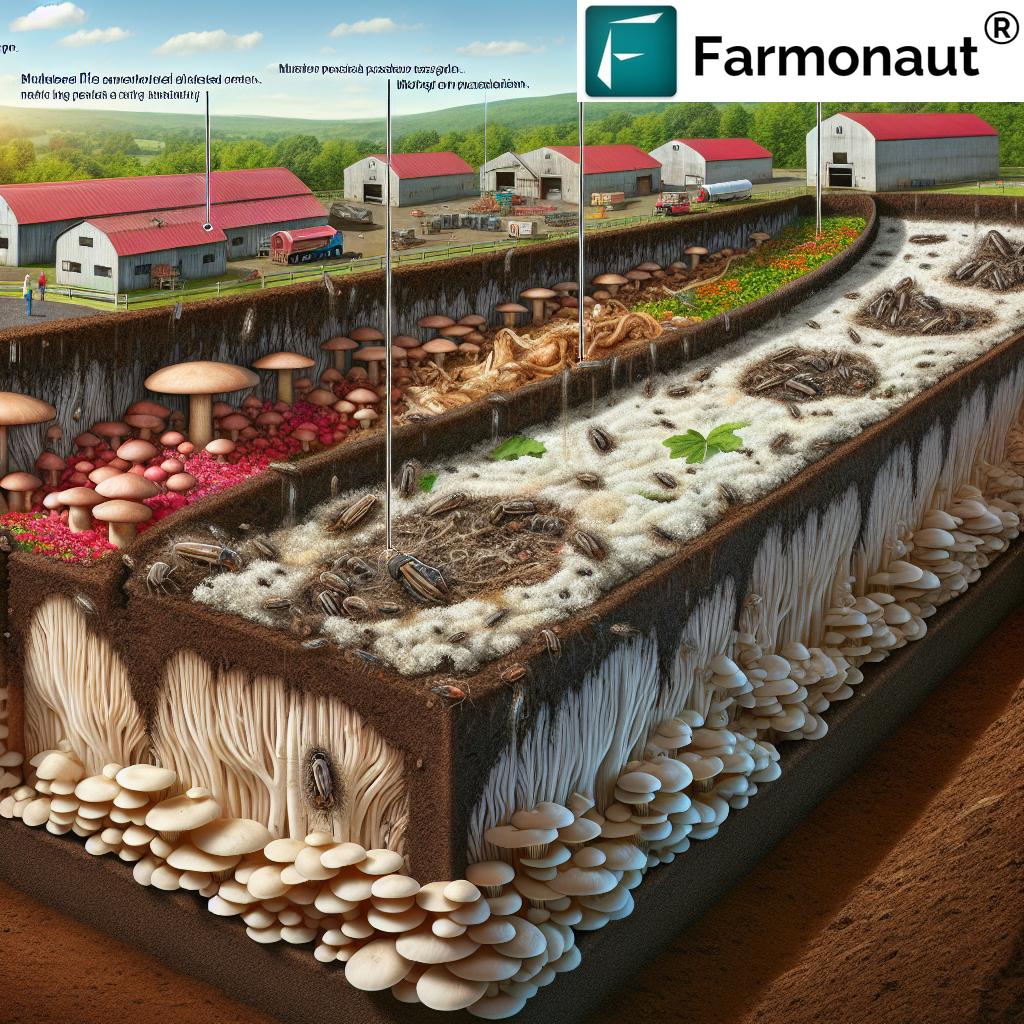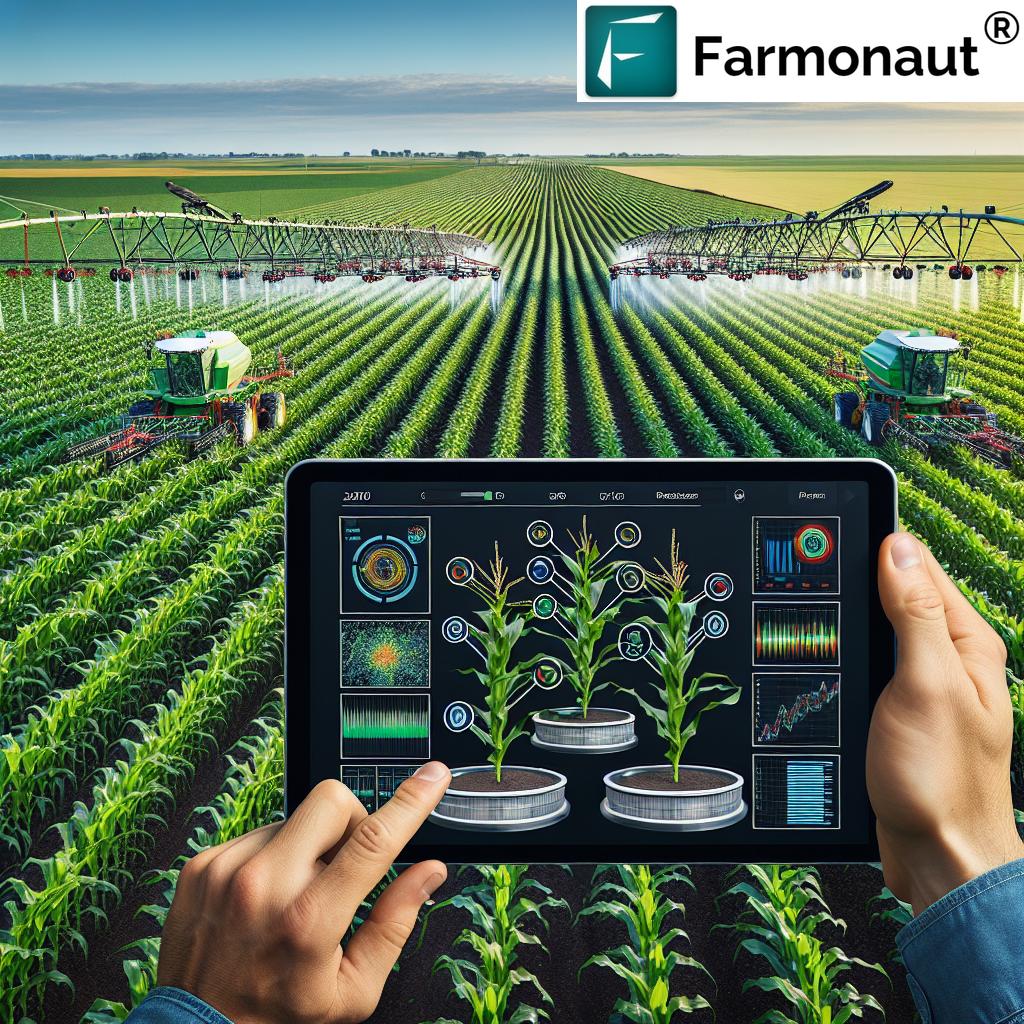Illinois Farmland Auctions & Prices 2024: Recent Sales
Illinois Farmland Market Outlook 2025: Trends, Prices, and Recent Sales
“In 2024, some Illinois farmland auctions reached above $20,000 per acre, reflecting historically strong market demand.”
As one of the nation’s most fertile and productive agricultural states, Illinois continues to play a pivotal role in the U.S. farming landscape. Heading into 2025, the Illinois farmland market remains closely watched by farmers, investors, and agribusinesses, given its robust cropping systems, advantageous location, and legacy of resilient value growth. Influenced by shifting commodity prices, input costs, new technological advancements, and evolving economic conditions, understanding the dynamics of Illinois farmland auctions, sales data, and per-acre trends is essential.
This comprehensive article examines the latest developments in Illinois farmland prices 2024 to 2025, delving into recent Illinois farmland sales, auction outcomes, and market influences that shape the present and future valuation of these valuable assets. Whether you are a landowner, tenant operator, investor, or agribusiness advisor, our goal is to provide actionable insights through detailed analysis and up-to-date data on Illinois farmland price per acre and broader market outlooks.
“In 2024, some Illinois farmland auctions reached above $20,000 per acre, reflecting historically strong market demand.”
Illinois Farmland Auctions: Setting the Tone for 2024–2025
Illinois farmland auctions have long served as a transparent and dynamic mechanism for setting land values. In 2024 and continuing into early 2025, auction activity in the state has attracted significant attention from local farmers seeking expansion, established operations fine-tuning their acreage, and outside investors attracted by the stable asset performance that farmland typically delivers—even amid volatility in other economic sectors.
The buoyant mood witnessed in Illinois farmland auctions is buoyed by several factors, including:
- Renewed optimism about corn, soybean, and specialty crop demand—both domestically and for export.
- Persistent biofuel demand and national policies that incentivize renewable agriculture.
- Steady to rising interest from institutional buyers who view farmland as a hedge against inflation and global uncertainty.
- The allure of technological advances—market participants are increasingly aware of the value-add from precision agriculture platforms and soil health improvements.
However, auction activity remains regionally differentiated. Northern and Central Illinois counties—including McLean, Champaign, and DeKalb—continue to command the highest per-acre prices, frequently exceeding $12,000 per acre for top-tier tracts. In contrast, Southern Illinois farmland, while comparatively lower in price, is seeing steady appreciation owing to infrastructure improvement and wider adoption of diversified crops.
Recent auction data suggests that prime-location sales in 2024 have even achieved results well above $15,000 per acre for especially fertile or well-situated farms. These high points are important indicators of continued demand and value stability going into 2025.
Illinois Farmland Prices 2024–2025: Value Per Acre Analysis
The trajectory for Illinois farmland prices 2024 through early 2025 demonstrates a compelling story of both stabilization and selective increase. After several years of strong appreciation, 2023 highlighted a more moderate, yet resilient, market—harbinger of enduring demand and investor confidence.
Key takeaways on Farmland Price Per Acre Illinois:
- Statewide average: Hovers between $10,500 and $11,000 per acre statewide—a moderate increase from the previous year, reflecting underlying demand and resilient values.
- Premium regions: Some tracts in Central Illinois fetch $15,500–$20,000 per acre, owing to premium soil and remarkable cropping history.
- Lower-tier regions: Southern Illinois counties, despite comparative fertility constraints, still attract steady buyers with average prices below $8,000 per acre, but are steadily rising due to infrastructure and yield improvement.
- Large tracts: Highly productive, contiguous tracts above 100 acres attract notable premiums at auction, underlining buyer interest from both large farming operators and institutional investors.
- Diversified interest: There is growing demand for tracts suitable for regenerative and sustainable agriculture, reflecting new buyer priorities.
Recent Illinois farmland sales and Illinois farmland price per acre data reinforce that this robust pricing environment is likely to remain a feature of the market in 2025.
Want to make your farmland more valuable with carbon stewardship? Our Carbon Footprinting tool delivers satellite-driven, real-time tracking of your field’s emissions and sequestration—with the potential to add value under emerging sustainability market frameworks.
Recent Illinois Farmland Sales – Patterns & County Highlights
Examining recent Illinois farmland sales is invaluable for understanding local market patterns, buyer behavior, and what factors attract the highest bids. Analysis of 2024 data underscores a few consistent themes:
- Larger parcels (>100 acres): Consistently purchased by farmland investment funds, family offices, or trusts. These buyers seek long-term value generation—both through leasing to operators and speculative appreciation in values.
- Smaller parcels (<50 acres): Often remain in local farming hands. Bids tend to closely reflect local averages and the unique context of each farm’s soil, yield history, and access.
- County standouts: McLean, Champaign, and DeKalb counties were among the highest in per-acre sale price in late 2024, regularly exceeding $15,000 per acre.
- Lower cost regions: Pope County and Hardin County remain more affordable, largely due to marginal soils and less direct access to grain elevators and transport hubs—averaging below $7,000 per acre.
Importantly, the landscape of Illinois farmland remains dynamic—prices are influenced not only by soil productivity and proximity to transportation but also by water access (irrigation adds a premium), environmental considerations, and even the spread of precision agriculture (explore satellite-powered large-scale management tools).
Recent Illinois Farmland Auction Results by County (2024–2025)
Below is an illustrative table representing estimated recent Illinois farmland auction results across key counties. This overview helps farmers, buyers, and investors quickly compare per-acre prices and understand the factors influencing current market trends:
| County | Auction Date | Acres Sold | Estimated Price per Acre (USD) | Total Sale Price (USD) | Land Type | Notable Sale Factors |
|---|---|---|---|---|---|---|
| McLean | Mar 2024 | 140 | $16,500 | $2,310,000 | Cropland | Prime soil, access to grain hubs, high yields |
| Champaign | May 2024 | 90 | $14,700 | $1,323,000 | Cropland | High organic matter, irrigation, strong local market |
| DeKalb | Feb 2024 | 60 | $13,800 | $828,000 | Cropland | Excellent location, access to transportation |
| Sangamon | Jul 2024 | 100 | $11,850 | $1,185,000 | Cropland | Good infrastructure, moderate soil rating |
| Saline | Jun 2024 | 110 | $8,200 | $902,000 | Mixed use | Access to highway, diverse soil, mid-tier yields |
| Pope | Aug 2024 | 75 | $6,800 | $510,000 | Cropland/Timber | Limited row cropping, some woodland |
| Hardin | Apr 2024 | 60 | $6,500 | $390,000 | Mostly timber | Remote, wildlife area, hunting lease potential |
Note: The above data is based on recent public auctions and reported private sales spanning late 2023 to early 2025. Actual prices may differ by exact parcel characteristics.
Interested in monitoring soil moisture and crop health efficiently? Explore Farmonaut’s crop and plantation advisory platform for actionable, satellite-powered insights to improve yields and farm value.
“Recent sales show Illinois farmland prices vary regionally, with Central Illinois averaging $15,500 per acre in 2024.”
Regional Price Trends and Factors Affecting Illinois Farmland Value
Why do Illinois farmland prices 2024-2025 vary so significantly by region? It comes down to a mix of soil quality, accessibility, market proximity, local infrastructure, and evolving market trends:
- Soil Quality: Counties like McLean and Logan boast some of the Midwest’s most fertile soils, allowing consistently high yields for staple crops—commanding a substantial premium per acre.
- Transportation Access: Proximity to major highways, rail hubs, and grain elevators adds value by lowering logistical costs and improving crop sale opportunities.
- Market Patterns: Regions with robust local farming economies tend to see more competitive bidding, as neighbors are eager to expand operations and preserve economies of scale.
- Ag Infrastructure: Availability of tile drainage, irrigation, and on-site facilities can boost land value by as much as 10–15% over comparable, unimproved parcels.
- Technological Capabilities: Farms equipped for precision agriculture and digital monitoring receive higher bids at auction, as buyers factor in the future potential for cost savings and productivity increases.
- Input Costs: Elevated prices for fertilizer, chemicals, and diesel continue to shape buying power and farm profitability, placing a soft ceiling on speculative price spikes.
- Crop Mix and Sustainability: Land suitable for diverse or organic cropping, or that supports regenerative farming practices, is increasingly desired in 2025.
For those managing >1,000 acres or complex crop rotations, Farmonaut’s Fleet & Resource Management solution can dramatically reduce costs, optimize machinery use, and improve logistical efficiency across widespread farmland holdings.
Illinois Farmland Market Outlook 2025: What to Expect
What is the outlook for Illinois farmland auctions and prices as we move further into 2025?
- Prices Likely to Remain Strong: We expect per-acre prices to hold steady, with potential for moderate increases in top-tier counties as demand continues to outpace supply for highly productive tracts. Even in a slightly higher interest rate environment, farmland’s reputation for stability will keep demand healthy.
-
Key Market Drivers:
- Commodity trends: If global corn and soybean markets remain favorable, farmland value could see additional support.
- Input costs: Should fertilizer and diesel stabilize or drop, profitability per acre rises, boosting value.
- Technological adoption: Tracts ready for precision ag and carbon programs will attract a premium, especially as carbon credit markets expand.
- Weather patterns & risk management: Land with built-in resilience (irrigation, drought-resistant crops) will see stronger demand.
- Government & Sustainability: Programs promoting soil health, resource conservation, and carbon sequestration will further influence the market. Land optimized for these initiatives could gain in value over the next cycle.
- Investment Diversification: As traditional asset classes fluctuate, investors will continue seeking farmland as a hedge, especially in Illinois where supply is limited and regulatory risk remains relatively low.
Overall, signs point to a resilient, balanced Illinois farmland market in 2025, underpinned by strong local demand, shifting technology, and the perennial importance of agriculture to both the regional and national economy.
Stay ahead of local weather and agronomic trends! Download the Farmonaut app for satellite-powered real-time field insights and advisory—available for both


Want to automate farm monitoring on web or browser?

Integrate satellite data directly into your farm management systems: Check out our API for easy data access, or read the Farmonaut API Developer Docs to discover full integration possibilities for agri-fintech, insurance, and farmland analytics firms.
Farmonaut Technology: Empowering Farmland Decision-Making
As the pace of technological advancements accelerates, the ability to capture, analyze, and act on crop and soil data is becoming a deciding factor in the Illinois farmland value equation. At Farmonaut, our suite of satellite-driven agriculture solutions is purpose-built to deliver actionable insights for all stakeholders in the farmland market:
- Satellite-Based Monitoring: Leverage remote sensing and multispectral imagery to assess real-time vegetation health, soil conditions, yield potential, and irrigation needs—all critical in maximizing land value and supporting transparent sales or appraisal.
- AI-Powered Advisory (Jeevn AI): Get tailored, farm-specific advice and forecasts in real time.
- Blockchain Traceability: For those marketing specialty, organic, or regenerative crops, product traceability through blockchain improves transparency and unlocks premium market access.
- Fleet and Resource Management: Track, analyze, and optimize operations across large or distributed farmland investments.
- Environmental Impact: Measuring carbon footprints and resource use supports compliance for new government programs—and adds to the bottom-line through direct incentives and improved land valuations for climate-smart agriculture.
- Access to Financing: Farmonaut’s crop loan & insurance verification streamlines lending and insurance processes for landowners using verifiable satellite data, reducing admin time and fraud.
Subscription Options: Access affordable monitoring and analytics on a scale that fits your operation.
Integrate with your workflow through APIs and developer tools.
Illinois Farmland Auctions & Prices 2024: FAQs
What is the average price per acre for Illinois farmland in 2024–2025?
The statewide average for Illinois farmland price per acre is approximately $10,500–$11,000, with prime tracts in Central Illinois often exceeding $15,500 per acre.
Why do auction prices vary so widely in Illinois?
Illinois farmland auctions reflect the underlying differences in soil quality, location, access to markets, and local buyer competition levels. Proximity to major infrastructure and productivity is key.
Are institutional investors active in the Illinois farmland market?
Yes, institutional buyers such as investment funds and trusts are increasingly acquiring larger tracts (>100 acres), drawn by stable income potential and historical appreciation of Illinois farmland.
How do input costs and commodity trends affect Illinois farmland value?
Higher input costs can constrain short-term profitability, softening price growth. However, continued demand for corn, soy, and biofuel crops sustains long-term value in the market, especially in high-yield regions.
How can Farmonaut support Illinois farmland owners and buyers?
We at Farmonaut offer satellite-based monitoring, carbon tracking, blockchain traceability, and fleet/resource management tools to maximize operational efficiency, and support data-driven land valuation/appraisal for all market participants.
Conclusion: The Road Ahead for Illinois Farmland Values
2024 and 2025 are shaping up to be years of moderate yet stable growth for the Illinois farmland market. Prices per acre remain historically strong, particularly in high-quality soil regions with robust infrastructure and market access. The value of agriculture land in Illinois continues to reflect not only its productivity but also its strategic role in food, fuel, and carbon markets.
Key takeaways include:
- Illinois farmland auctions remain a critical barometer for local demand and emerging price trends.
- Recent sales underscore the regional disparity in value—but even lowest-tier counties show solid resilience in the face of input and economic challenges.
- Technological adoption—including soil health monitoring, precision farming, and sustainability practices—is increasingly recognized in pricing and buyer appetite.
- Both farmers and investors should closely watch upcoming auctions, trend reports, and government incentives to make informed 2025 decisions.
For those wanting to stay ahead, leveraging satellite analytics, environmental monitoring, and blockchain-based traceability from providers such as Farmonaut will be increasingly valuable in navigating the next wave of opportunities in the Illinois farmland landscape.











